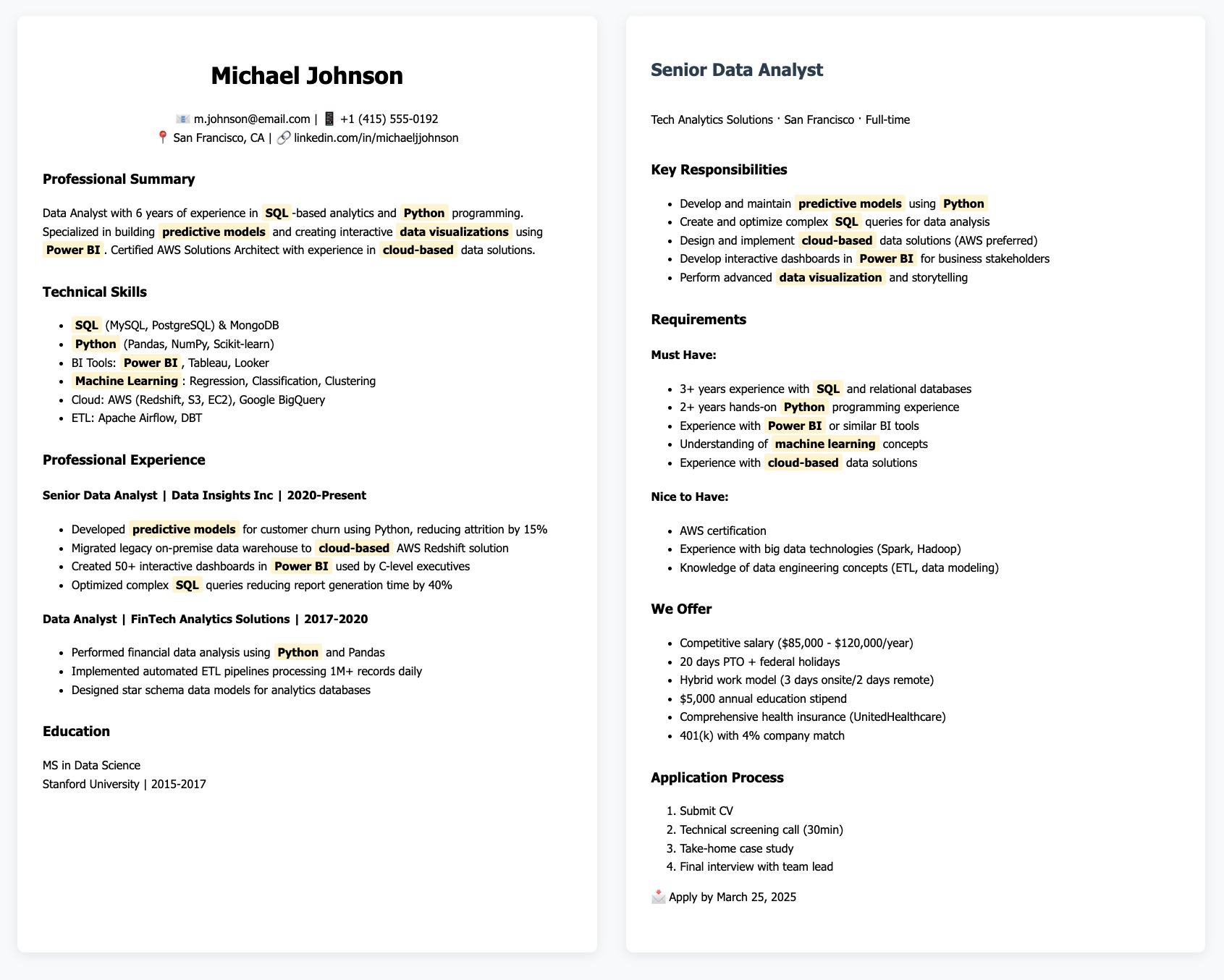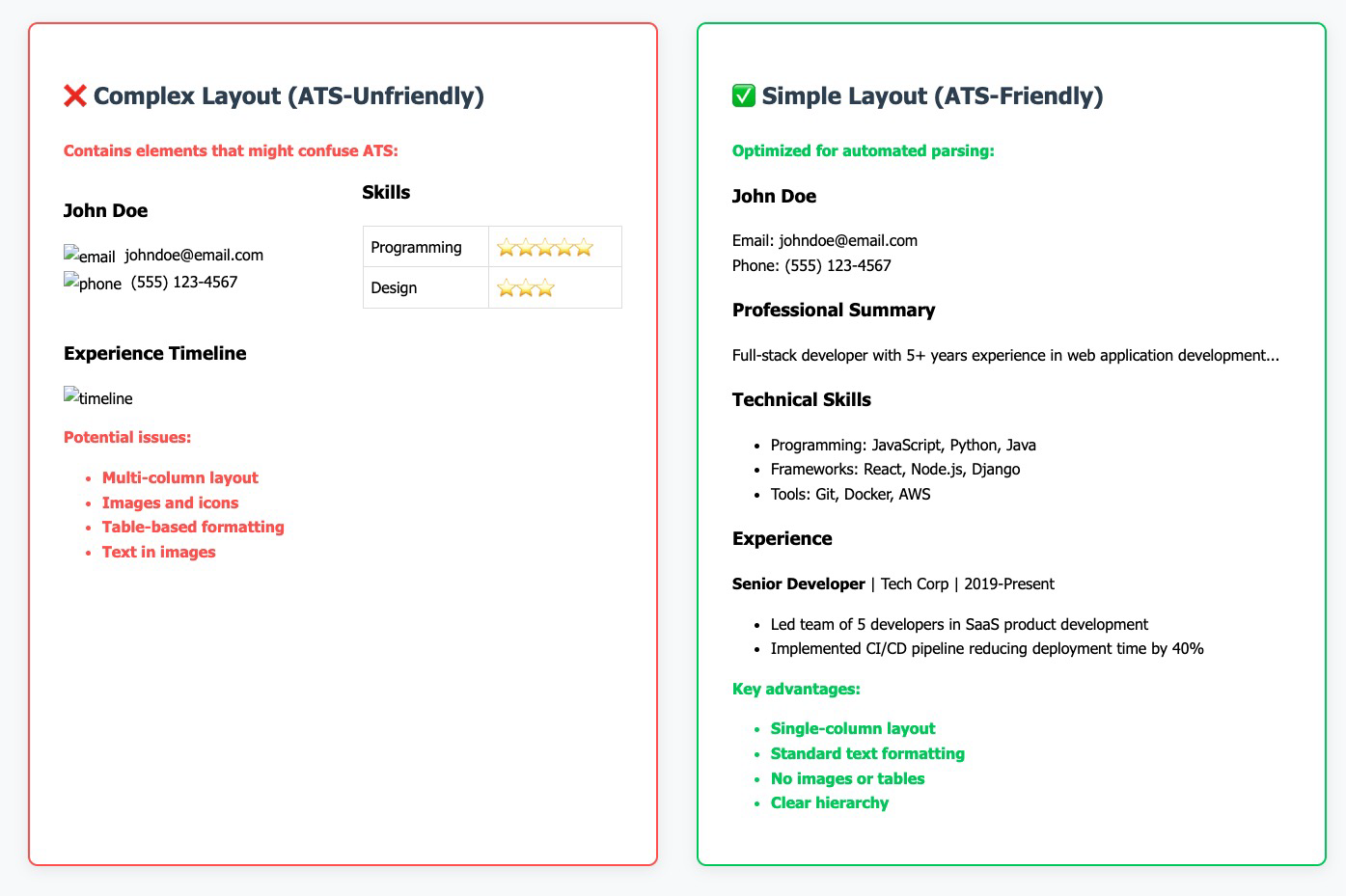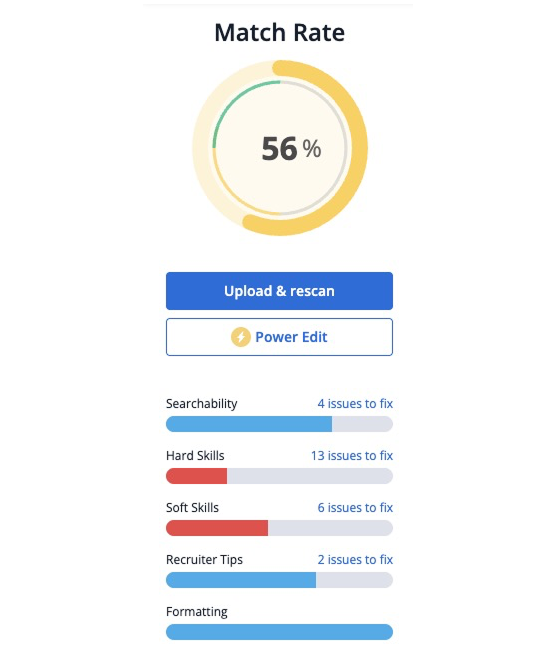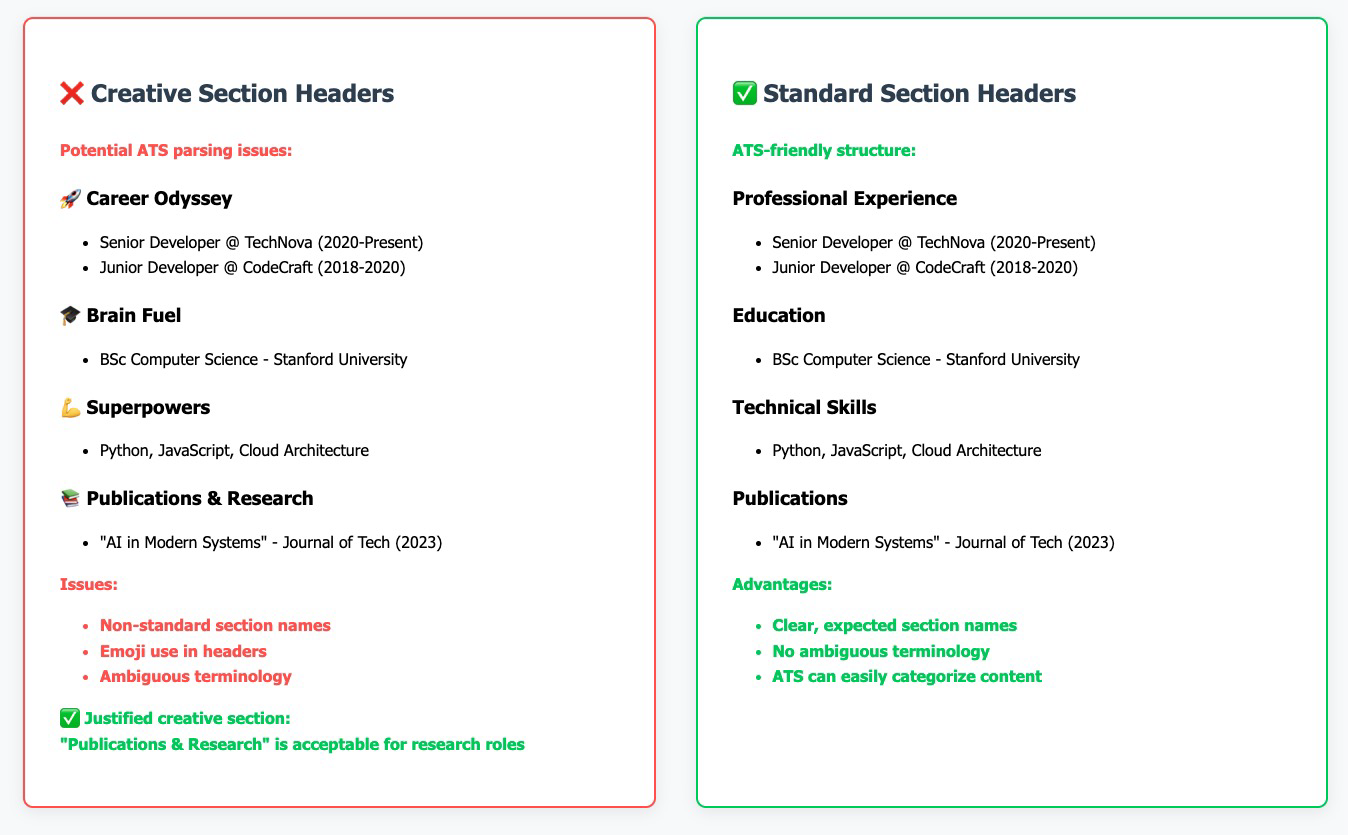ATS Resume Template: 6 Tips to Pass the Resume Pre-screening (and Land Interviews Faster)
Are you struggling to get past automated resume screens? Whether you've been laid off or seeking better compensation or if you're just exploring the job market, getting through the pre-screening stage might be tough. Many candidates get rejected at this stage. And that makes sense, recruiters get hundreds of applications per each job description, and most recruiters have to fill multiple vacancies at the same time. This is where ATS come into play – application tracking systems that help recruiters with many things, including pre-screening of the candidates.
There's a few things that you can do (or avoid doing) while creating a resume, to increase your chances of passing the automated pre-screening test and not be rejected because of formatting or contents of your resume that can be easily adjusted.
But first, feel free to grab the ATS-friendly resume template below, that accounts for most of the things covered in the article. To reliably cover all the tips, feel free to sign up for ApplyMate, which will make sure your resume isn't rejected because of the tech limitations & you get a custom resume for each job.
To get the editable resume optimized for ATS, click on the template below. From there, you'll need to go to File → Make a copy of the document, and modify as you'd like. After that, it can be downloaded in the DOCX or PDF format.
And now back to the tips.
Mirror job description keywords
This is the biggest lever by far to boost your ATS resume score and consequently increase your chances of getting noticed. And that's relevant not only to ATS, but human reviews as well. Not all recruiters have enough technical background to know the difference between similar-sounding skills, for example, SQL and NoSQL while going through the resumes. So even if you're proficient in both technologies, include these keywords strategically to ensure both the algorithm and the human will recognize your qualifications.
And yes, following this tip would mean that you'll need to create a separate resume for almost all of your applications. This can be done manually (feel free to check out the template at the top of the article), but this process gets pretty time-consuming. Especially, when you need to send out 100 applications before you get your first offer.
Good news is that there's a number of tools that can help you with it. ApplyMate is the app designed specifically to pass the ATS resume test & generate resumes that match job description. All you need to do is to fill in your experience (or upload existing resume), add the job description you'd like to apply for, and it will generate the properly formatted, ats-friendly resume.
Of course, it doesn't stop there. ChatGPT could be of great help with it. It's missing the formatting options and right now it's not very good with crafting PDFs out of the box, but pairing our template with the good prompt should help you solve the problem. With a bit of copy-pasting, you'll be able to get the first resumes.
However, make sure you avoid so-called "keyword stuffing", i.e. overloading your resume with the keywords. When it comes to top-scoring resumes, recruiters review those manually before sending out invitation, so make sure to keep the balance of readability and optimization. Otherwise, the resume won't pass the smell test.
Avoid complex layouts and unnecessary images
While there's nothing bad in using images, tables, flowchart diagrams and other instruments to showcase your experience, in certain cases it can get in a way with your visibility in ATS. Most of these systems are parsing the text of the document and make their decisions based off that, so including some non-standard element can easily be ignored or even negatively impact your resume score. Images with the text on it also have higher chance to be ignored by the system.
Ideally, you should present all the important info just using regular paragraphs & bullet points. Single-column layout would be the gold standard here. If you assume that your resume will be scanned automatically by some resume checker (which it probably will), it's always a good idea to keep it in one column. This will help you avoid the parsing issues of your resumes. One-column format is also readable by humans, so there's no harm in it. Choosing default fonts should also be a good idea, although I'd put it on the spectrum of less important things.

Use ATS-friendly file formats: PDF or DOCX
Some application forms will prevent the upload of any other file formats, but for others this might be a big deal. Always submit your resume as PDF or DOCX. Using .pages, .odt, or some other file formats might get you rejected even before your resume gets scanned to see if there's a match.
It's always a good idea before applying to test your resume for parsing errors in some free ATS checkers such as JobScan. It will show you if it was parsed successfully and whether there's anything else you'll need to work on.

Don't get too creative with section headers
Sometimes creating a custom section header is totally justifiable. For example, if you're applying for a journalist position, including the section with your publications would make a lot of sense. On the other hand, if your resume has only the default sections – Experience, Education, Skills – they should all be named like that, avoid using "Career Journey", "Academy", or something of the kind.

Include contact information
Sometimes the application forms don't request contact information from the applicants or make it optional. To make sure those cases are covered, include the same contact information you add to the job application to your resume. This will help ATS with classifying your application and recruiters will be able to reach out to you with the interview invitation.
Optimize file size
Especially when it comes to PDF files, it's easy to overlook the file size. This can easily result in ATS rejecting your resume. There's a few cases why this could be happening. For example, some editors might embed the fonts into the files. Another common problem is saving files in the print-quality, which is excessive for our purpose. To solve those, use the default system fonts and after saving check that the resume is 1MB or less. If it's more than that, there's plenty of tools that can help you compress your resume without any problems, Ilovepdf is just one example.
Conclusion
In today's competitive job market, creating ATS-friendly resumes is not only optional, but essential. By implementing the strategies outlined above, you can increase your chances of passing the automated screening and getting your application in front of recruiters.
Whether you choose to use our free template, leverage ApplyMate to automate the process, or customize your existing resume using these guidelines, implementing these changes can dramatically improve your job search outcomes and help you land interviews faster.